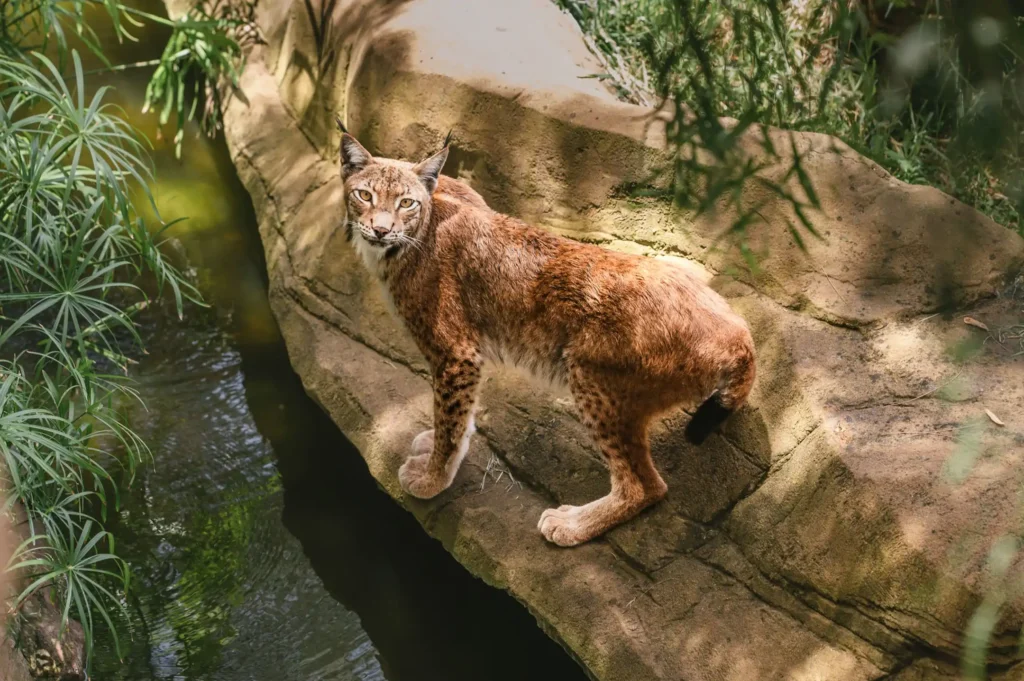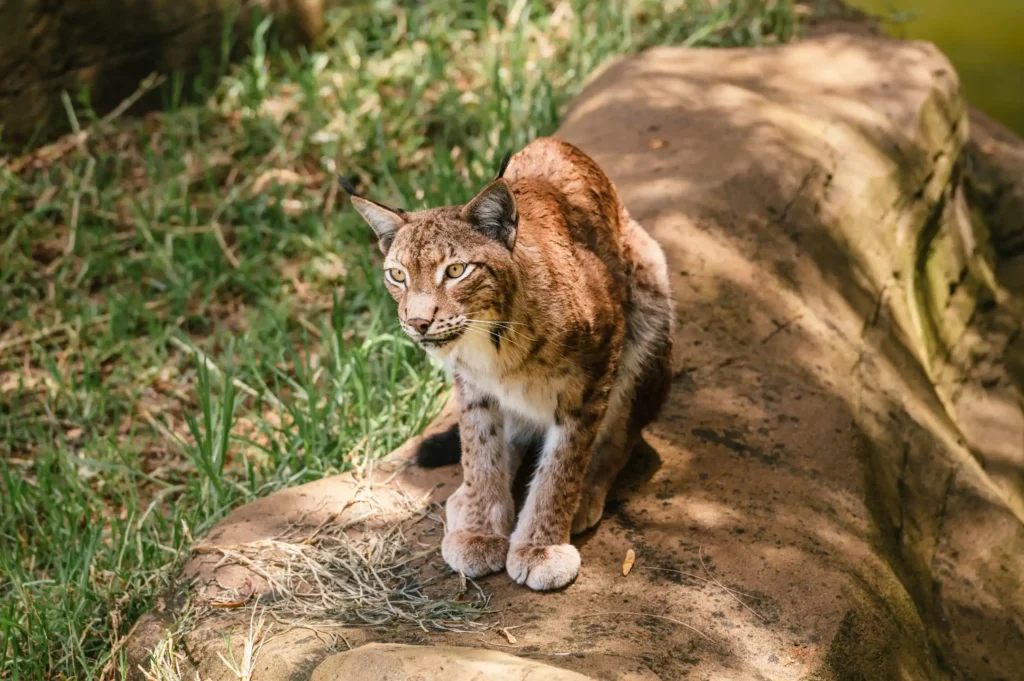Medium-sized feline that shares the same taxonomic genus as the Iberian lynx.
Physical features
This animal has the typical slender and elongated silhouette of these felines, with a coat that varies in thickness and length depending on the population and the season. They have a particular sandy coloured coat with black spots, which also varies according to the population. Those located further North in areas such as Russia, Scandinavia, etc. have a more dense coat and greyish tones with almost no spots.
The tail, about 15-20 cm long, is considerably shorter than in other felines and has black tones at the tip, which is very characteristic of the species.
Their average weight is between 18 kg and 30 kg and their length is about 100-130 cm with a height of about 70 cm.
They are provided with strong, retractable, sharp claws to catch their prey.
Habitat
Their main area of distribution is very extensive and covers a large part of Europe such as Russia, Scandinavia, etc… and some Asian countries such as North Korea, Mongolia… in many cases forming different subspecies.
Depending on its distribution, it also frequents different types of habitats, from forest areas, low mountain meadows to high mountain areas, being found at altitudes of up to 3500m, which demonstrates its easy adaptability to the environment.
Diet
These animals, like all felines, are strict carnivores and their diet is based on small and medium-sized mammals such as hares, roe deer, etc. They are exceptional hunters, using their strength, agility, speed and mimetism to catch their prey by surprise and avoid being harmed, for example when hunting roe deer.
Reproduction
They reach sexual maturity at 3 years of age, slightly earlier in females, and go into seasonal oestrus depending on the hours of sunlight and environmental temperature.
As mammals, they gestate their offspring for about 70 days and then nurse them for the first few months of their lives.
The number of pups per birth varies between 1 and 5 pups with a birth weight of around 250g, although they can have very numerous births of more than 10 pups.
Behaviour
They are crepuscular or even nocturnal creatures, showing much less activity during the day, when they rest hiding among the vegetation or in caves they find in the rocks.
These animals are highly territorial, protecting an area of up to 185 km for males and slightly smaller for females. They are predominantly solitary, sharing territory only with their partner, and are not usually seen in groups.
Threats
Its main threats are indiscriminate hunting to obtain its skin as a hunting trophy and the destruction of its habitat by deforestation, road and urbanisation construction, pollutants, etc.
Its population is considered stable and is estimated to be around 50,000 individuals. Certain subspecies are more threatened, such as the Balkan lynx population in Albania and Kosovo.
Status and conservation
It is a species protected by the CITES convention in its medium grade in appendix II.
Classified as Least Concern (LC) in the IUCN Red List.





